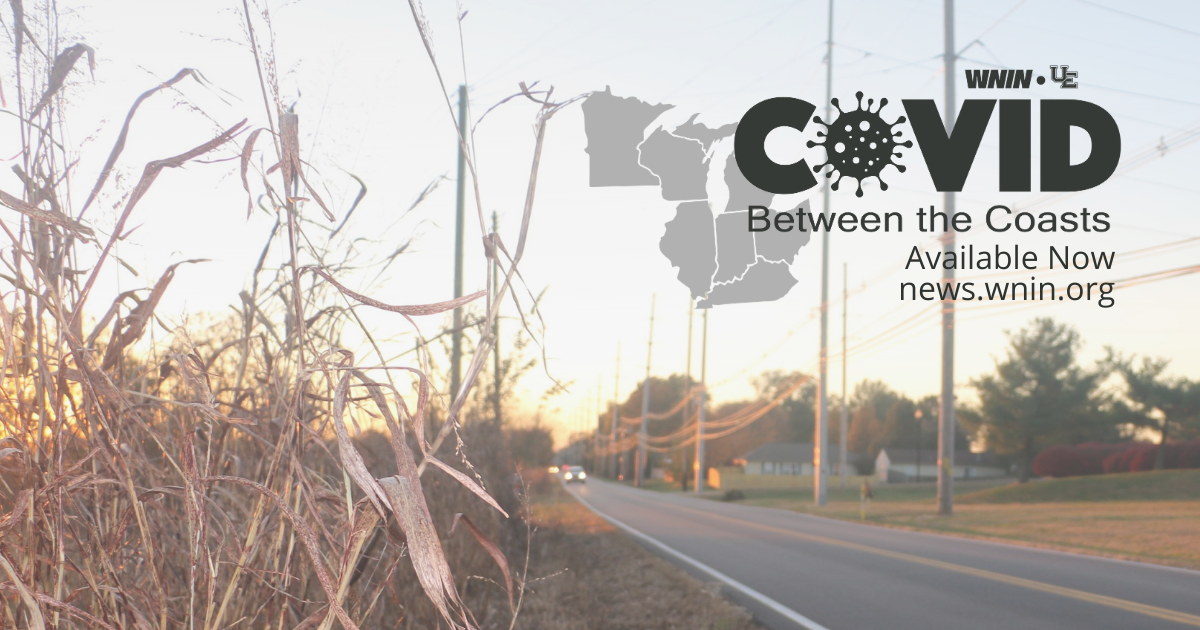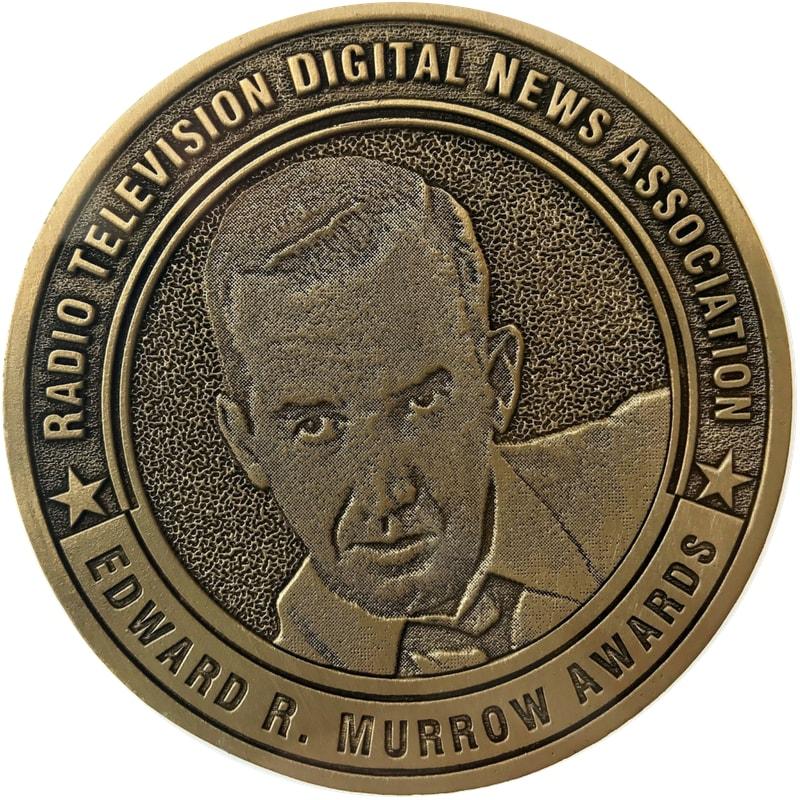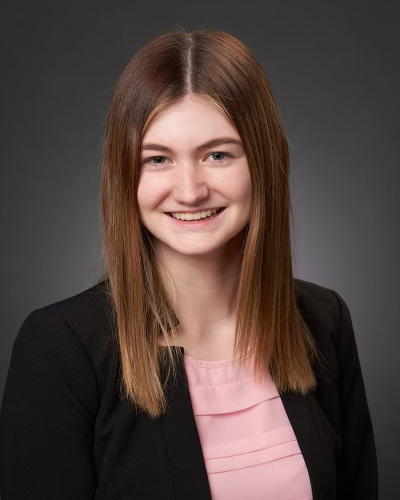Student Perspective
Pieces of an Award-Winning Podcast Project
By Nicole Tucker
Declaring a math major when entering college just made sense. Despite receiving a multitude of surprised and bewildered reactions, I knew I could make a career out of it. Although happy with my major choice, I missed the excitement and challenges of projects and the sight of a blank page ready to be filled with the words of a new story. I had previously declared a communication minor but never felt like a real writer or someone qualified to do real journalism work. I sat in my communication courses feeling like a fraud, as if at any time the real communication students surrounding me would discover my mathematic roots and know I was an imposter. I didn't know how to conduct an interview or write a podcast script, and I sure didn't know who Edward R. Murrow was. Little did I know, during my sophomore year, I would be a part of a team that would win one of those prestigious National Edward R. Murrow Awards, and I would see my attempt at journalism work come to fruition and be published.
Piece One: Trusting the Process
Dr. Tamara Young has always seen something in me that I've struggled to see myself. It was her that pushed me to declare a communication minor in the first place, and once again, it was her that got me wrapped up into this project during my sophomore year. I took her recommendation and signed up for a ChangeLab course titled ‘Investigative Journalism', despite not even completely knowing what investigative journalism was. I signed up for the class and let it drift from my mind as summer plans became my priority.
I was snapped out of my summer state of mind quickly when I received an email in early August from Dr. Young wanting to meet via Zoom and start on the project prior to the start of the semester. I really began to wonder what I had gotten myself into, but quickly brushed away my anxious thoughts and sent in my availability. The meeting ended with each of seven students in the class tasked with researching COVID in an individual Midwest state. Research—that was something I could do, especially research revolving around my home state of Indiana. I was confident in my researching skills and that shined through as I quickly completed my background research and sent it to Dr. Young well before the deadline. News and numbers involving COVID were rapidly changing though, and I found myself having to update and add to my research before the deadline passed and then dozens of times after. The next task was to find sources and conduct interviews that pertained to stories involving mass spreads of COVID within our individual states. I didn't exactly know where to start when it came to finding sources, but I quickly discovered that Facebook would be an excellent tool. Even today, scrolling through Facebook, I come across posts from Facebook groups I joined solely for this project. The beginning of the project involved conducting preliminary interviews of these potential sources. Due to lack of confidence in my skills and the desire to complete the assignment stress free, I opted to send short emails or direct messages containing my interview questions rather than making phone calls. After the research and basic interviews, we all dove headfirst into the heart of the project, which we now knew was titled COVID Between the Coasts.
Piece Two: Heart of the Project
My email archives capture the true behind the scenes of my work on COVID Between the Coasts. It was via email that I first asked Dr. Young if I could continue research into the effects of COVID on student athlete recruitment and a quick reply that sent me diving into research and interviews. It was also through an email that I contacted my first source for what would become episode 8 of the COVID Between the Coasts podcast series.

COURTESY WNIN.ORG
Scrolling through Instagram, I noticed several student athletes from my former high school had committed to continuing their athletic careers in college. Immediately, I wondered how COVID affected their recruitment and commitment process. A light bulb flipped on in my head, quickly generating ideas to use for a story. Dr. Young gave me the go ahead to pursue the topic just as quickly as I formed the idea. The pieces began to fall into place as my research proved my theory of altered student athlete recruitment true. My excitement grew upon receiving word WNIN, an NPR affiliate and the main collaborative partner of the project, loved my story angle and wanted me to turn my research into a podcast. Suddenly I was no longer a student working on research and story angle ideas, I had the pressure of doing the work of a journalist, which came with strict deadlines and high standards of quality. My to-do list became filled with tracking down sources, recording interviews, writing a script, and recording the podcast. Luckily, my classmates didn't let me take this all on by myself. In a week's time, each of my classmates had emailed me the contact information for a source fitting the concept of my story. Our team of students came from a variety of majors and backgrounds with each of us bringing different strengths and weaknesses to the table. It was the strength of our team of students, the support and guidance of Dr. Young along the way, and the collaboration with WNIN that truly made this project successful.
My past emails show more than just the progress of the project. They also show the roadblocks encountered along the way and the long hours put in throughout the semester. The first evidence is seen by an email with a 2:43am time stamp and attached file titled “A Very Very Rough Script”. I really value sleep, so you know if I was up that late, this project meant a lot to me. I wanted everything about this project to turn out perfect, even though half the time I didn't know what perfect even looked like for these tasks. My need for perfection led me to ending up inside Dr. Young's office at least once a week and sometimes every single day of the week seeking approval on completed work and asking dozens of questions. The semester continued with the completion of four recorded interviews and over three pages of scripted material.
Piece Three: Published, Awarded & Definitely Not an Imposter
It was just a class that was added onto my planner at the beginning of the semester, but it became more than just an average class. It never felt like a class, and I never felt like a student. I felt like a real journalist part of a team with a meaningful job assignment. I was always gaining journalism skills and general professional skills. I was pushed outside of my comfort zone constantly. If you listen to the final podcast, you will hear the voices of the sources I was in contact with for the story. These audio clips were recorded during phone interviews I conducted with each of the sources. In the podcast, you only hear the answers of the sources, yet originally these recordings included my awkward introduction when the voice on the other line answered the call, the series of questions I spouted off in a tumble of words, and my sigh of relief when the call was over. I've never liked to pick up a phone and make important phone calls. Phone calls have always been a source of anxiety for me, yet it was necessary for all the interviews for the final podcast to be conducted and recorded via phone call. I grew as a researcher and a journalist, but more importantly I gained and strengthened the skills that will be necessary in my future no matter what career I pursue.

CREDIT RTDNA.ORG
Knowing my work had been published and was being viewed as well as listened to by people around country brought me much pride, and I didn't hesitate to show my friends and family the link to my podcast on the WNIN website. As the semester ended and the excitement surrounding the project died down, COVID Between the Coasts was no longer at the front of my mind. My focus shifted to the classes and projects of next semester in a blink of an eye. Mid-summer, COVID Between the Coasts reappeared on my radar as I was notified the project had won a National Edward R. Murrow Award. I naturally added it onto my résumé and continued on with my summer. It was weeks later during a résumé check meeting for my sports analytics summer research program that I started to understand the significance of the award. The program co-director and head of the Carnegie Mellon University Statistics and Data Science Department, scrolled through my page of experience and achievements, but suddenly stopped as she read the COVID Between the Coasts section. She seemed surprised and impressed as she questioned why she wasn't already aware of my involvement in an Edward R. Murrow award-winning project. On the other end, I was just as surprised to hear of her apparent knowledge on Edward R. Murrow awards; I didn't expect someone in the statistics field to know anything about the journalism award recently placed on my résumé. After my discussion with the co-director of my summer research program, I realized the significance of the award and looked more into the prestige of the award. It is still amazing to me that this small collaborative project based out of Evansville, Indiana was recognized on a national level.
At the end of the day, I'm a mathematics student, but I'm also a communication minor. I no longer sit in my communication classes feeling like an imposter. How could I when my journalism work is still just a click away on the WNIN website? Not only do I now know who Edward R. Murrow is, but I also have a National Edward R. Murrow award on my résumé. I can truly say signing up for that random Investigative Journalism ChangeLab course impacted me in the best of ways and was one of the best decisions I have made since coming to the University of Evansville.

